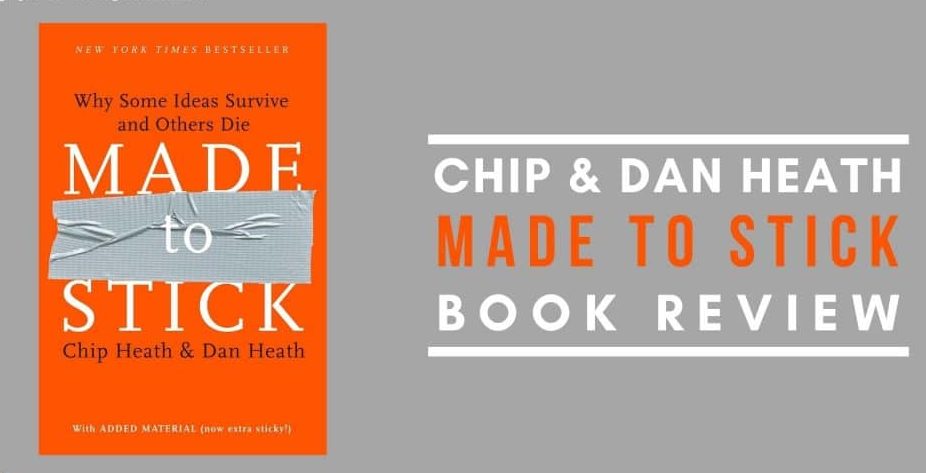In Chip and Dan Heath’s Made to Stick: Why Some Ideas Survive and Other Die (2007), the authors explore 6 principles to making ideas stick:
Simplicity
“An idea has to be simple if it’s going to stick. People have to be able to understand it, focus on it, and relate it to things they already know. Simple ideas are short and sweet; they get past the confusion and right to the core of what you’re saying. Sell it in a sentence.”
Unexpectedness
“An idea with an unexpected twist is extremely powerful. It stops people in their tracks and it’s the secret behind great comedy (the unexpected punchline) and thrilling never-saw-it-coming endings in movies like The Sixth Sense. Keep everyone on their feet and give them something they’d never expect.”
Concreteness
“Relating your ideas to “real world” things makes them just as real. It makes them concrete. If you can take people to a place or show them an object, you can make the idea that much more real. You can also paint a mental picture that relates your idea to something visual. Or a smell, a taste. A place they’ve been or a common childhood experience that most people have gone through.”
At the turn of the 20th century, the French author Marcel Proust found himself crippled by writer’s block. One day he bit into a Madeleine and he was flooded by a rush of childhood memories.
Proust wrote down his memories in a semi-autobiographical novel titled In search of Lost Time – a 4211 page volume to this day considered one of the longest books ever published.
This notion of making ideas concrete, creating mental pictures in the minds of your readers, is commonly found in feature writing , speeches, brochures.
Credibility
“Albert Einstein once said … well, Einstein could pretty much have said anything and it’d be credible. Because he could prove it. Prove your ideas; cite expert testimony, show the figures and statistics. And best of all, demonstrate it; if you can provide indisputable real-world proof your idea is real, it’ll stick.”
Emotion
“If you can make people care about it, they’ll get it. Emotions are all about change. And if you can inspire and motivate, create a call to “right a wrong;” if you can compel people to take action to make change, your ideas will stick.”
Many fitness or personal development gurus use emotion to inspire change in people – they’ll ask you to think about all the pain you’ll continue to experience if you don’t change, and all the positive feelings (self-esteem, pride, etc.) that you’ll get if you do change your behaviour
Stories
“Since the beginning of human history, stories have been our most powerful vessels for knowledge. Stories paint the whole picture; heroes, villains, triumphs and tragedies. Stories combine the simple, the unexpected, the concrete, the credible and the emotional. Turn your ideas into stories and they’ll not only stick. They just might become legendary. By sharing stories we multiply experience.”

